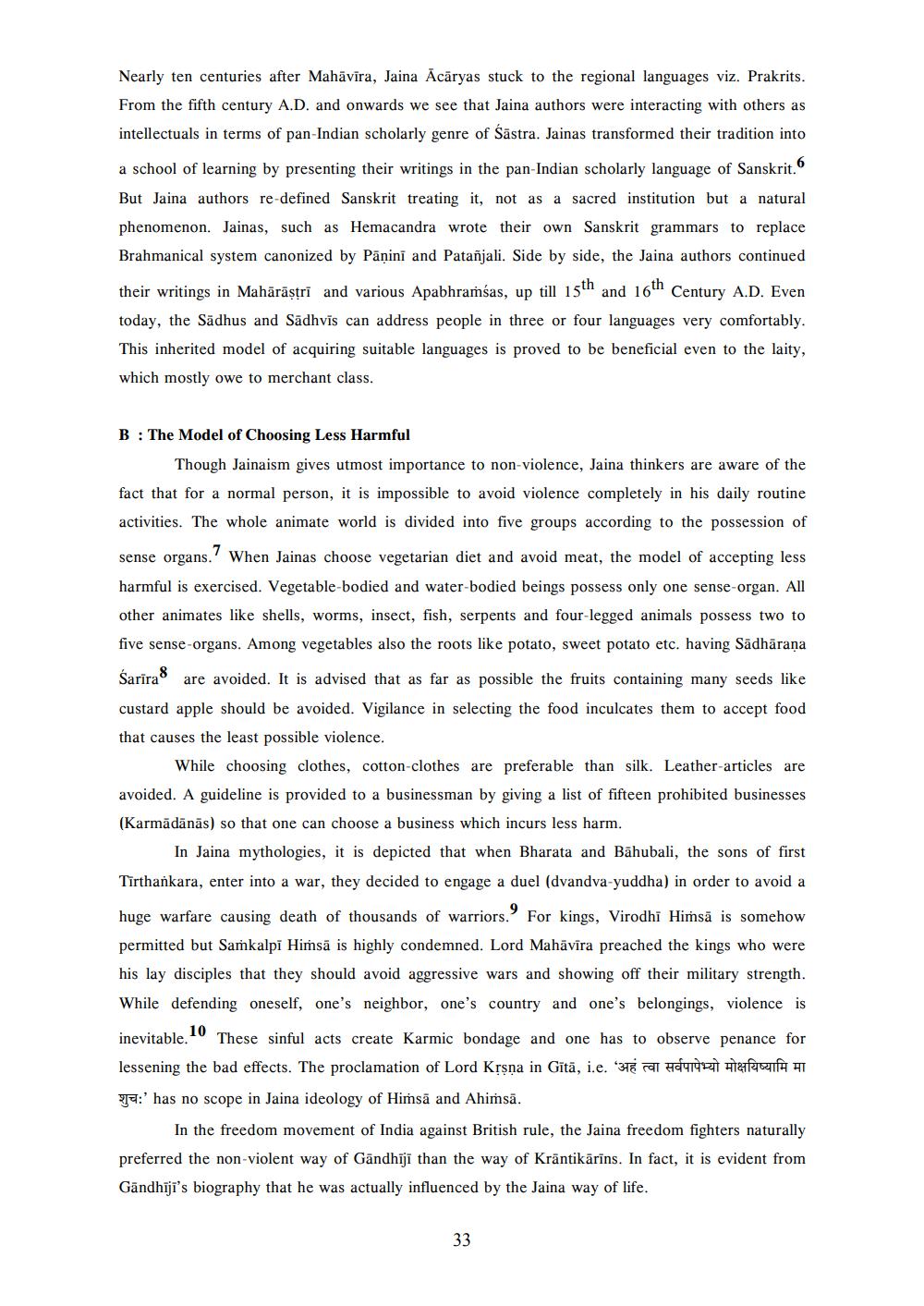________________
Nearly ten centuries after Mahāvīra, Jaina Acāryas stuck to the regional languages viz. Prakrits. From the fifth century A.D. and onwards we see that Jaina authors were interacting with others as intellectuals in terms of pan-Indian scholarly genre of Sāstra. Jainas transformed their tradition into
a school of learning by presenting their writings in the pan-Indian scholarly language of Sanskrit. But Jaina authors re-defined Sanskrit treating it, not as a sacred institution but a natural phenomenon. Jainas, such as Hemacandra wrote their own Sanskrit grammars to replace Brahmanical system canonized by Pāṇini and Patañjali. Side by side, the Jaina authors continued
their writings in Mahārāstrī and various Apabhramśas, up till 15th and 16th Century A.D. Even today, the Sädhus and Sādhvīs can address people in three or four languages very comfortably. This inherited model of acquiring suitable languages is proved to be beneficial even to the laity, which mostly owe to merchant class.
B: The Model of Choosing Less Harmful
Though Jainaism gives utmost importance to non-violence, Jaina thinkers are aware of the fact that for a normal person, it is impossible to avoid violence completely in his daily routine activities. The whole animate world is divided into five groups according to the possession of
sense organs. When Jainas choose vegetarian diet and avoid meat, the model of accepting less harmful is exercised. Vegetable-bodied and water-bodied beings possess only one sense-organ. All other animates like shells, worms, insect, fish, serpents and four-legged animals possess two to five sense-organs. Among vegetables also the roots like potato, sweet potato etc. having Sadhārana
Sarīra are avoided. It is advised that as far as possible the fruits containing many seeds like custard apple should be avoided. Vigilance in selecting the food inculcates them to accept food that causes the least possible violence.
While choosing clothes, cotton-clothes are preferable than silk. Leather-articles are avoided. A guideline is provided to a businessman by giving a list of fifteen prohibited businesses (Karmādānās) so that one can choose a business which incurs less harm.
In Jaina mythologies, it is depicted that when Bharata and Bāhubali, the sons of first Tīrthankara, enter into a war, they decided to engage a duel (dvandva-yuddha) in order to avoid a
huge warfare causing death of thousands of warriors. For kings, Virodhi Himsā is somehow permitted but Samkalpi Himsā is highly condemned. Lord Mahāvīra preached the kings who were his lay disciples that they should avoid aggressive wars and showing off their military strength. While defending oneself, one's neighbor, one's country and one's belongings, violence is inevitable. These sinful acts create Karmic bondage and one has to observe penance for lessening the bad effects. The proclamation of Lord Krsna in Gītā, i.e. 3 rar
d
o
:' has no scope in Jaina ideology of Himsā and Ahimsa.
In the freedom movement of India against British rule, the Jaina freedom fighters naturally preferred the non-violent way of Gāndhiji than the way of Krāntikārīns. In fact, it is evident from Gāndhīji's biography that he was actually influenced by the Jaina way of life.




